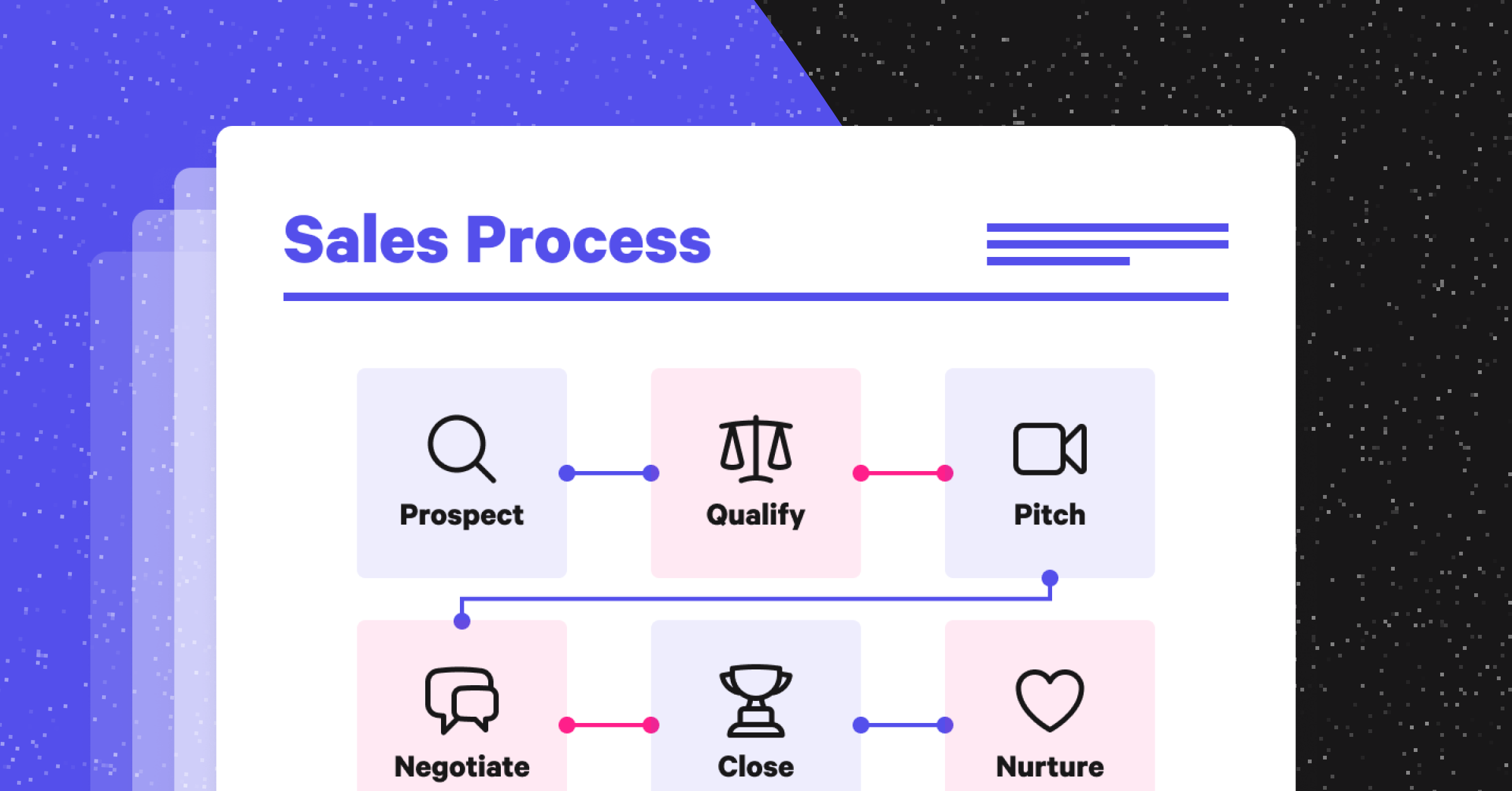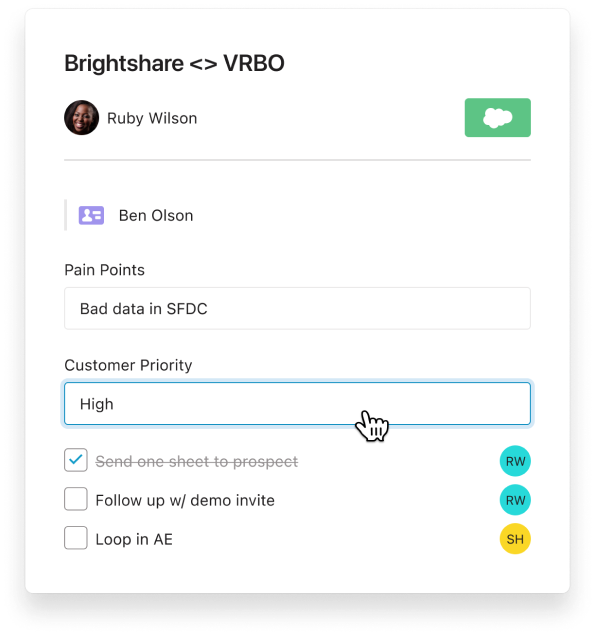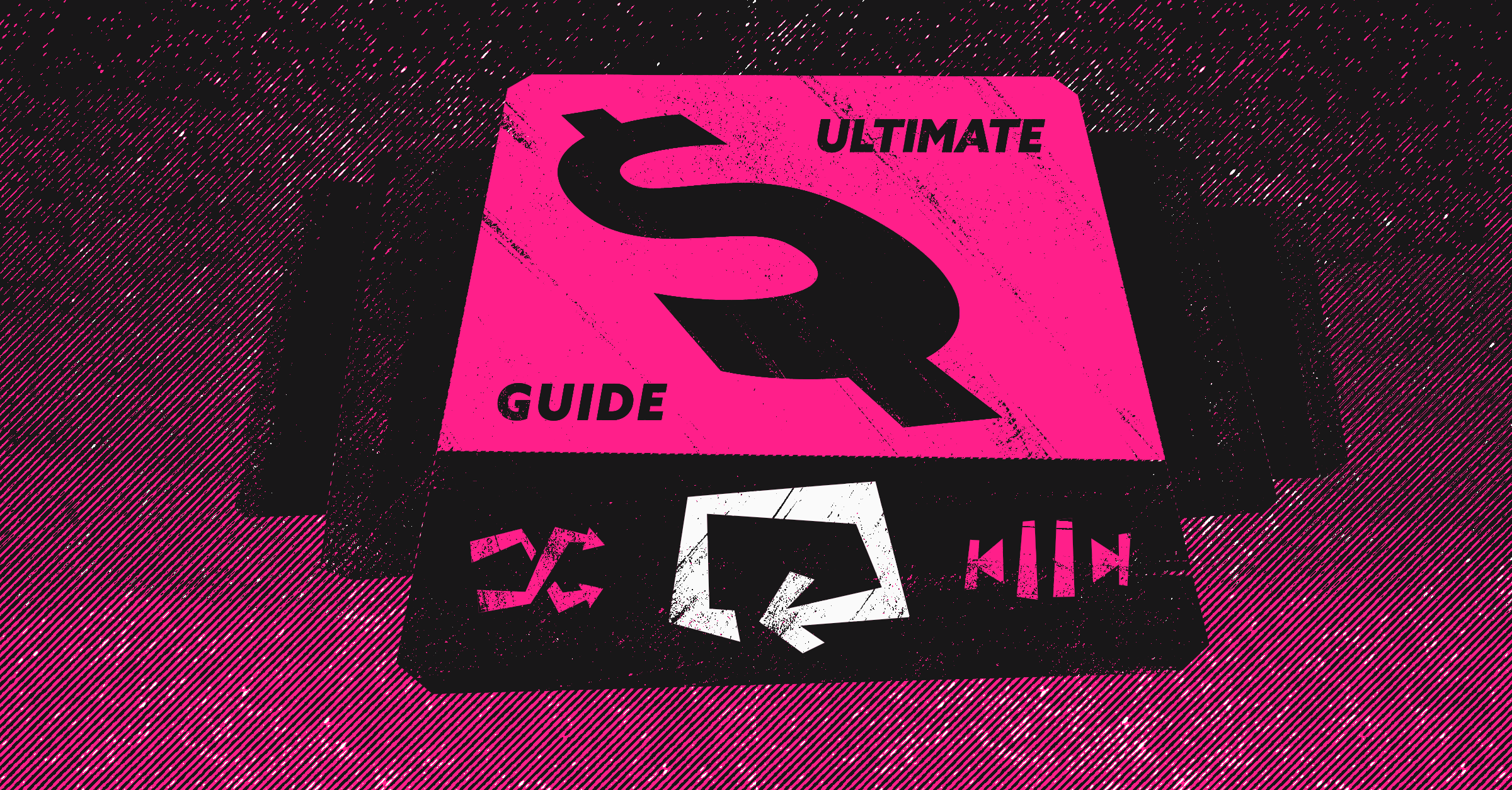
Booking meetings, handling objections, closing, hitting quota — ah, the excitement of sales. That’s what salespeople love—but following methodologies and using a sales process template? Hum, not so much, right?
However, while winging it tends to work for most salespeople, having a formal sales process greatly improves the entire team’s performance and results in tremendous growth in revenue.
Keep reading to find out how a sales process can take your game to the next level.
- What is a Sales Process Template?
- How Do You Structure a Sales Process?
- What Are the Benefits of Having a Sales Process?
- Why Is a Documented Sales Process Important?
- Beginning Your Sales Process
- How to Build a Sales Process: Step-by-Step Instructions
- Free Sales Process Templates
- How to Measure the Effectiveness of Your Sales Process
- How Dooly Helps Your Sales Process
What is a Sales Process Template?
Sales process refers to the series of steps that a sales team repeatedly takes to move a prospect from a lead to a closed customer. It is a framework that helps sales reps consistently close sales.
Sales reps are not exactly the best at following imposed routines. Leave all that to the accounts department; they’re no fun. But did you know, B2B companies with a defined sales process experience 18% more revenue growth, according to a study by Vantage Point Performance?
How Do You Structure a Sales Process?
A sales process is basically a roadmap that guides your sales team, where the X that marks the spot is closed sales. It is generally agreed that there are seven key steps that provide an outline for a good sales process.
1. Prospecting
In your sales process, your starting point is prospecting. You need leads in your sales pipeline before you can think about anything else. Prospecting involves sourcing early-stage leads to feed into your sales process. This is a vital step in the process and a huge part of any sales rep’s workflow.
Prospecting can be done in several ways.
- Social selling
- Outbound prospecting to lists of leads
- Inbound leads from marketing
- Networking at conferences and industry events
You could even ask current clients and colleagues to refer people as potential customers who might be interested in your products or services. This is a particularly underrated tactic, given that a new referral’s lifetime value is 16% higher than your average customer.
Finally, a sales process that gives you the freedom to sell.
Build a repeatable, winning sales process with Dooly's powerful note templates.
Try Dooly for free
2. Connecting and Qualifying Sales Leads
Connecting is all about making initial contact with the early-stage leads. Sales qualification is the next natural step. In fact, the two mostly happen simultaneously. Connecting with your leads involves determining whether or not they are likely to move forward in the journey.
This step usually involves making phone calls or sending discovery sales emails with qualifying questions such as:
- What problems are you trying to solve?
- What solutions have you tried to implement?
- What is your role within your company?
3. Research
The next step in the sales cycle is to know as much as possible about your prospect. This way, you can see things from their point of view, so you can offer a personalized experience that goes a long way in improving your chances of closing the deal.
Your prospect has a problem, and you want to position your product or service as the perfect solution. If you were in the prospect’s shoes, would you buy from you?
4. Making Your Pitch
Once you have all the relevant information about your prospect, you can come up with a compelling pitch. This is crucial because it determines whether or not you move on to the next step. You don’t want all your hard work to go to waste, so you must ace the presentation.
You’re probably thinking about PowerPoint presentations and sophisticated graphs and charts, but what matters is showing your customer that you understand their needs and how you will meet them.
5. Handling Objections
As you probably know already, not all sales pitches will be a slam dunk. It is pretty common for prospects to have objections to your presentation. Do you know what differentiates a good salesperson from a great one? How they handle rejection.
This step involves listening to the prospect’s objections and questions regarding the product or service. This way, you can use the information to better tailor the product to meet the prospect’s needs.
6. Closing the Deal
This is the end goal for every salesperson and sales manager. This stage varies widely from one company to another, but it ultimately results in a contractual agreement to move on with the purchase.
7. Following Up
Most people think the sales process ends at the closing stage, but there’s another crucial step that involves continued communication with the customer. This is great for repeat purchases and even referrals.
Maintaining a functional customer relationship is the key to retention. This is especially important when you consider the fact that it is seven times more costly to acquire a new customer than it is to retain an existing one.
What Are the Benefits of Having a Sales Process?
It Provides a Clear Roadmap for Sales Reps
While winging it often works for salespeople, it makes more sense to know exactly what needs to be done at each stage. Having clearly defined guidelines to follow saves time and helps avoid disorganization–one of the things that hold back sales reps.
Great for Onboarding New Staff
Onboarding new staff members is often a time-consuming endeavor. According to a report by Accenture, 42.5% of sales reps take ten months or longer before they are fully productive. Having a detailed document highlighting the sales process makes it easier to get the new staff up to speed.
Improved Communication Between Teams
The success of any company relies heavily on how well the departments work together. If your sales team has a language only they understand, it is harder to coordinate efforts with other departments like accounting or marketing. With a standardized sales process, collaboration is easier, and your teams can work together towards achieving company goals.
Better Customer Experience
Without a step-by-step process, sales reps can sometimes rush the prospect, creating distrust. The sales process is tailored to meet the customers’ needs. Each step is designed to build trust and offer value to the client, which is an excellent foundation for a positive customer experience.
Why Is a Documented Sales Process Important?
One common mistake in creating a sales process is failing to document it. One primary reason why documentation is necessary is streamlining. You want everyone on your team to be on the same page, working like a well-oiled machine.
Failure to document the sales process leaves it open to interpretation, leading to miscommunication and confusion. Documenting the process is how you set your teams up for success. It is your way of saying, “This is how we do things. After this step comes this, followed by that.” This streamlines the sales motion and dramatically increases productivity.
Beginning Your Sales Process
Now you know what a sales process is and why it is important. The next question is how you start. Keep in mind that each stage of sales process development should be tailored to your product or service. What works for another company might not necessarily work for yours.
If there are steps that aren’t particularly relevant to your business, you can cut them out and focus on those that positively impact your sales process and revenue generation. The next part describes how you can develop a sales process from scratch.
How to Build a Sales Process: Step-by-Step Instructions
1. Document Your Current Sales Process
Regardless of whether it’s documented or not, you have a sales process, and that’s where you start. Analyze what steps your reps usually follow from prospecting to closing. You can then document this process, working out the kinks along the way. Consider the parts that seem to work and those that don’t, so you can alleviate pain points and close more sales.
2. Identify the Stages of Your Sales Process
Next, you need to outline every stage of the sales process. How many stages are there in your sales process? The sales stages should reflect the customer’s buying process. They should be aligned to the customer’s basic decision-making process.
3. Define All The Steps in Each Stage of the Sales Process
How does the prospect go from point A to point B? What action causes them to move from one stage to the next? You should define exactly what needs to happen at each stage and how much time is spent there. There should also be an outline of some of the tasks involved in each step to guide your reps and maximize the time spent engaging with prospects.
Free Sales Process Templates
Building a sales process from scratch could potentially take up a lot of time, so it could be more beneficial to work from a sales process template. A template allows you to customize your sales process to suit your brand and the products or services you offer. Popular sales process templates include the following:
Free Sales Process Template from Hubspot
Hubspot’s free sales process template depicts a 10-step sales process:
- Prospecting – sourcing leads to feed into your sales process.
- Qualifying leads – comparing those leads to your ideal customer persona.
- Connecting – initiating contact through the phone or via email.
- Identifying needs and pain points – asking the prospects questions about their needs and any problems they’re facing.
- Presenting – presenting a demo of your product or service to the prospect.
- Handling objections – addressing any issues that may arise during or after the presentation.
- Issuing a proposal – drawing up a proposal to present to the prospect.
- Closing – making the sale and closing the deal.
- Delivering the product or service – fulfilling the new prospect’s needs.
- Upselling or cross-selling – following up with the new customer to boost retention and expand their account.
This template can be customized to suit your team better. You can reduce or increase the steps, taking your sales team’s input into account. The end goal is to have a sales process that your reps have no problem sticking to.
Free Sales Process Template from Reply.io
This template is relatively detailed, even though the steps are reduced to seven at most. The templates are categorized into inbound and outbound sales, with specific templates for SaaS companies. The sales process is divided into the following stages:
- Lead research
- Prospecting
- Pitch
- Negotiations
- Closing
- Nurturing
The template outlines each stage in the sales process and the specific teams responsible for that particular stage. It also highlights the activities to be done, as well as key metrics to use in measuring performance. Lastly, it also includes the tools that you can use in each step of the sales process.
How to Measure the Effectiveness of Your Sales Process
Once you have your sales process up and running, it is crucial to continually measure the information you gain from it, using that info to fine-tune the process for maximum results. Some key metrics you can use include:
1. Check the adoption rate by your sales team
How are your reps responding? Are they utilizing the process? It is vital to ensure you fully participate from all the teams involved. One way to ensure this is to use the sales team’s input in coming up with the process because they are the ones who are involved every step of the way.
2. Evaluate the win rate
Of all your prospects, how many of them convert into paying customers? If you’re not satisfied with your win rate, you need to find out what is causing the jam and fix it pronto. Analyze your top sellers and determine what they are doing differently. You can then incorporate that into the entire team’s sales process.
3. Monitor your sales cycle length
Your sales playbook is efficient when it takes the minimum amount of time for your sales reps to go from prospecting to closing. One way to reduce time inefficiencies in the process is to determine the characteristics of prospects who say no so you can disqualify them earlier in the process and focus more on prospects who are more likely to make a purchase.
How Dooly Helps Your Sales Process
A strong sales process is what your sales team needs to go from good to great. Start with documentation each step of the way. It helps them close more sales and provide a personalized experience that’s representative of your brand to all your customers.
Dooly is the perfect connected workspace for your revenue teams. By automatically syncing meeting notes and comments, you will eliminate the need for pesky manual data entry that eats into your precious time that could be spent on more critical tasks. You can move deals forward faster with templates that allow you to update Salesforce fields in real-time.
See Dooly in action with an interactive, on-demand product tour.
Join the thousands of top-performing AEs who use Dooly every day to stay more organized, instantly update their pipeline, and spend more time selling instead of mindless admin work. Try Dooly free, no credit card required. Or, Request a demo to speak with a Dooly product expert right now.


